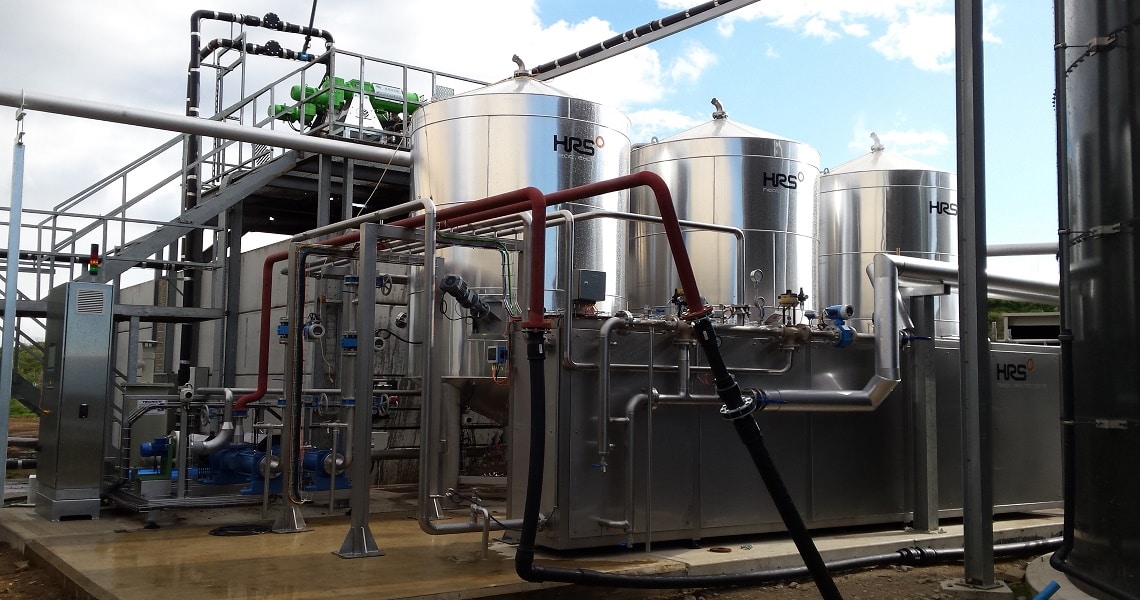The benefits of heat regeneration in heat exchanger systems

By Matt Hale, International Sales and Marketing Director, HRS Heat Exchangers
Heat exchangers which employ heat recovery or regeneration should not be confused with ‘regenerative heat exchangers,’ which are a specific type of heat exchanger.
What we mean by heat regeneration at HRS is the recovery of as much surplus heat (or cooling capacity) as possible after the primary function of the heat exchanger has been performed. This can then be reused to either improve the efficiency of heat exchange process or used elsewhere.
Examples of heat recovery
In a factory producing pasteurised cream; the cream needs to be heated to the necessary temperature to achieve pasteurisation, then rapidly cooled to maintain shelf life and quality. In the second process, the temperature of the cooling water is increased significantly. Cooling it again for re-use, but using some of the heat it contains towards the heat required for the pasteurisation phase utilises heat recovery or heat regeneration, reducing the amount of new energy required for the subsequent first heating phases.
Many anaerobic digestion (AD) plants use heat exchangers to pasteurise the digestate produced during the AD process, so that it can be sold as an agricultural fertiliser. The ‘surplus’ heat which is generated after the system has been running for two hours is used to preheat the digestate, reducing total heat load and improving overall plant efficiency by increasing the amount of generated energy which is available for export or other uses, as opposed to being required for pasteurisation.
The greatest benefits of heat recovery can be seen where multiple heat exchangers are combined – for example, in a multi-effect evaporation system such as the HRS DCS Digestate Concentration System. This uses heat exchangers and evaporation to reduce the volume and increase the concentration of sludges and digestate. The first evaporation stage heats liquid digestate and uses a cyclone separator; the steam produced from this first cycle (usually available at 70˚C) is then used as the heating media for the second effect, whereby the process is repeated. The subsequent steam (usually available at 60˚C) is then used as the heating media for the third cycle. The number of effects is determined by the level of dry solids required and the amount of surplus heat available, up to a maximum of four cycles. After the final stage the steam is condensed back to water and this heat is used to pre-heat the incoming product before the first stage of evaporation.
Heat recovery is not limited to systems dealing with liquids. HRS recently supplied a large G Series gas-to-gas heat exchanger to recapture heat from the high temperature exhaust gases leaving a large chemical reactor. This recovered heat is then used to help pre-heat the chemicals entering the reactor to around 500oC.
Benefits of heat recovery
The most obvious benefit of improved efficiency is that less energy is required to achieve the necessary level of heating or cooling. In turn, this reduces running costs and also improves the environmental footprint, compared to other exchangers which do not include heat recovery.
The lower initial energy requirement can also make it possible to utilise heat sources or heating media which would otherwise not be feasible. For example, if warm water is available, adding heat recovery may allow it to be used as a heating medium elsewhere in the process.
Alternatively, the improvement in efficiency can be used to provide the same level of heat transfer but in a smaller package. When combined with technologies such as corrugated tubes, heat recovery can enable a heat exchanger to be installed in locations with restricted space or other limited factors.
Where energy input and space is not an issue, with all other factors being equal, the improved process efficiency provided by heat regeneration may allow faster processing or greater product treatment rates.
Whatever lies behind the decision, utilising heat recovery when specifying a heat exchanger installation is good for your process, good for your wallet and good for the environment.